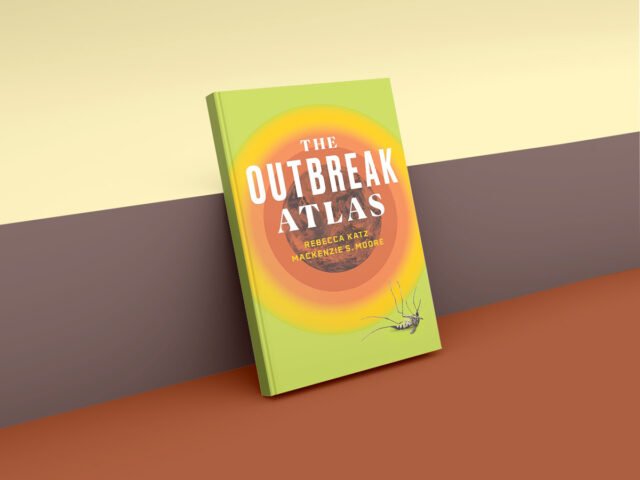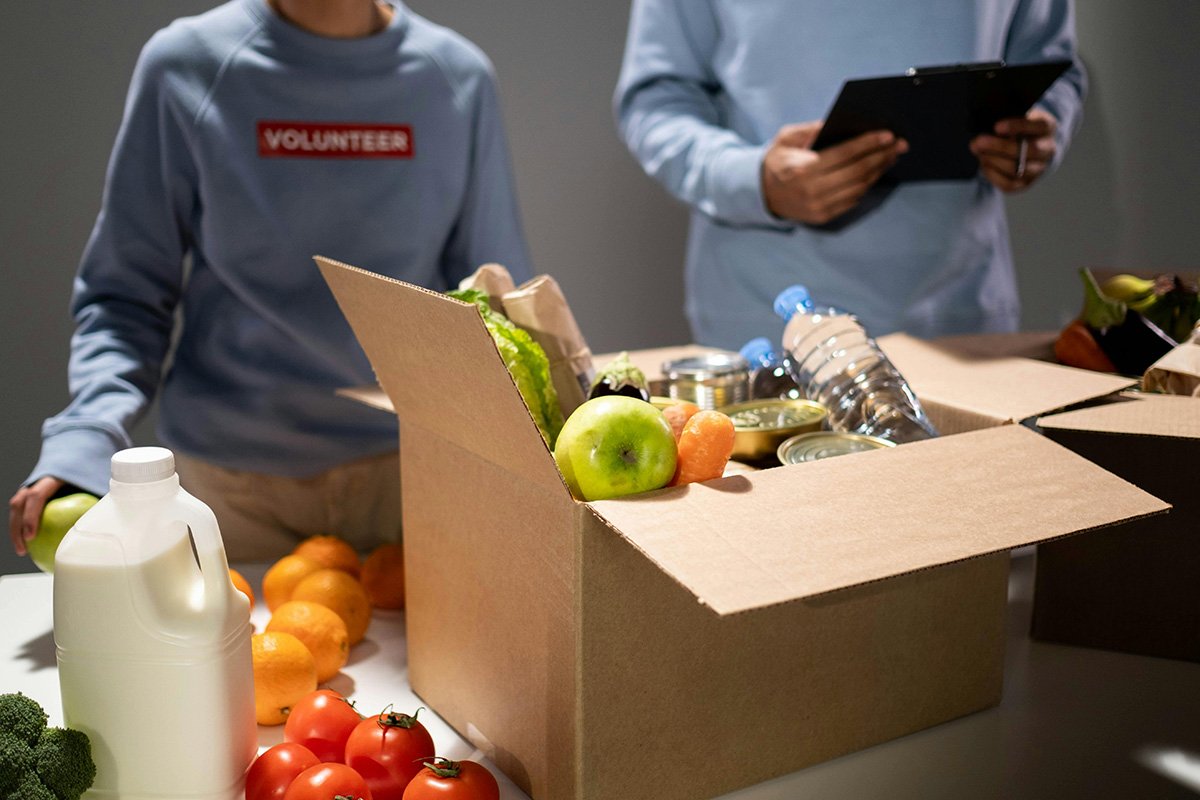
The COVID-19 pandemic, which casts a long shadow over the hearts and minds of people across the globe, sparked interest, fear, and a sense of urgency around disaster preparedness and response, especially when it comes to viral outbreaks.
The pandemic also created opportunities for exchange and mutual learning between experts and non-experts as everyone worked to mobilize recourses, develop solutions, and otherwise minimize the devastation by collectively working to prevent the spread of the virus. During this time, outbreak preparedness and response and its role in safeguarding health sparked a global dialogue. As the world continues to recover from the COVID-19 pandemic, research shows that it may not be the only life-altering outbreak to occur in our lifetime. It is imperative that in the wake of the COVID-19 pandemic, we continue to have important discussions about outbreak preparedness and response.
Rebecca Katz and Mackenzie S. Moore spoke with NPQ about their recently released book, Outbreak Atlas. The book uses 175 case studies and visualizations to provide practical guidance on outbreak preparedness, response, and recovery. The book—which evolved from the Georgetown Outbreak Activity Library (GOAL)—provides “accessible information that ensures a shared understanding of the essential activities to control an outbreak.”
Tonie Marie Gordon: I imagine that you must have been writing Outbreak Atlas during the COVID-19 pandemic. Can you tell me about the events that led you to write the book?
Rebecca Katz: I was very involved in the response efforts for the pandemic at a variety of different levels—from the international, to the national, and subnational. And I supported the Biden-Harris transition and then the Biden-Harris administration. Outbreak response and policy around outbreak response is our area of expertise. I’ve been working in pandemic preparedness for 20 years. And then suddenly, people started understanding who we are and what we do. In our daily lives, our families were asking us questions and I was overhearing conversations at the grocery store about things like case fatality rates, which is a concept usually taught at the graduate level. What we came away with was that there’s a real need to educate the public.
At the time, our colleagues were talking about the importance of building trust with the public and the erosion of trust in public health, there are experts doing great work on that. To contribute to this dialogue around building trust and public outreach we decided to do what we do best, which is trying to raise public literacy. So, the idea behind this was really to repurpose the content we created to support public health emergency operation centers. That was the basis. Mackenzie and I sat down, and we were like, we can do this, we can translate this and rewrite all this material in a way that engages a much broader range of stakeholders. We wanted to help the public make more informed decisions and enable a higher-level discussion between decision-makers and the public at large.
Increasing public literacy is really at the core of Outbreak Atlas, this is part of our larger effort to increase public literacy around global health.
Mackenzie S. Moore: We’re public health specialists, global health specialists more specifically. And I think there are different information pipelines that start right before there’s an outbreak. There’s all of this information floating around. There are people on the ground, who are really embedded in the health ecosystem and who usually have decades of training. They know what these diseases look like, they know the patterns, they know how to recognize it. And that gets passed on to other professionals who also have extensive training. And at a certain point, that information is passed on to decision-makers and policymakers who aren’t public health professionals. There’s another information exchange between public health professionals and the group of people who have decision-making power, who are also well-educated. Then the information is shared with the public. So, [the] GOAL tool—which was Rebecca’s brainchild—was needed because the people communicating to the public, and even sometimes the people responsible for making decisions or creating policies don’t have a public health background. GOAL was designed for professionals who have extensive training in their field or their area of specialty, but their field isn’t public health.
We had been building GOAL for a couple years when the COVID-19 pandemic hit, and our family and friends started bringing their questions to us and we became their primary fact-checkers and sources for information. We started thinking, it’d be nice if GOAL, which includes some scientific jargon and technical language, existed for the public. Even when it comes to questions like what coronavirus is and how is it being transmitted, the details can be complex. Suddenly, every time people turned on the news, they were looking at graphs. But a lot of people don’t see graphs every day, and they wouldn’t know how to interpret certain types of graphs commonly used in public health. People were also bombarded with all these words that they most likely had never heard before. But there wasn’t necessarily an explanation about what those things mean or the logic behind some of the decision-making. That opens the door for a lot of questions, and I think questions are always positive. But when people have questions, it also opens the door for the spread of unreliable information. And I think that when there’s uncertainty, there’s also fear.
Increasing public literacy is really at the core of Outbreak Atlas, this is part of our larger effort to increase public literacy around global health. To have a more engaged public, people need to have access to information that’s not bogged down with scientific jargon and technical language. Some of this technical language can be exclusionary. It creates a barrier to entry. And like Rebecca said, a lot of these terms, a lot of these concepts, they’re not difficult, but they’re often not taught outside of graduate school. So you end up with this self-selected group of people who get into public health, epidemiology, and medicine, who get a master’s degree and obtain a PhD, who become entrenched in this information. Someone who doesn’t go down that path might not have access to that information, maybe because they don’t know what to look for or because they don’t know that it exists. I think having more information can increase public engagement and cooperation with public health measures.
By having a range of case studies…on how outbreak response activities play out in the real world, we’ve tried to make the subject matter more relatable and accessible.
RK: This is my seventh book, in addition to probably more than 100 journal articles. We write a lot in academia. Normally, as an academic, when you work on a book you’re writing for people with the same niche interest in the academic space. In my head, the work is done when the book gets published. I did my work by doing the academic research. This book is different. We went through an academic press because it was important to us that all the information was peer-reviewed. Even though we’re approaching these subjects in a different way, at the core, we needed to make sure that everything in there was correct. We even had a set of additional readers who are giants in the field and have decades of experience in outbreak response. But we feel really excited about the accessibility of the information. This is the first time in my career that accessibility is the part that matters most. We did all this work, and now we have to think about how we make sure that this information gets into the hands of people who are interested, who will use it to ask questions and engage with it.
MSM: The book is set up, so each chapter addresses a different subject area pertaining to outbreak response. We have chapters on epidemiology, governance, communicating with the public, community engagement, and humanitarian response, among others. We focus on what to do before, during, and after an outbreak. And within each chapter, we go into detail, breaking up all the activities involved. We’ve grounded these activities in 175 case studies. By having a range of case studies and fact boxes with information on how outbreak response activities play out in the real world, we’ve tried to make the subject matter more relatable and accessible.
TMG: There are conversations around what’s going to be the next big destabilizing outbreak and how people can rise to the occasion. I’m thinking about our readers who are involved in humanitarian work, schools, or small health-based nonprofits that are focused on an area of health that’s not central to outbreaks but could be affected by outbreaks. What are your perspectives on that?
RK: We are deep into the literature on pandemic preparedness, including the current science. So, if the question is, when it comes to a destabilizing event like the COVID-19 pandemic, will we ever see something like this again? We can say very confidently that we will. There are infectious disease outbreaks happening all the time. We’ve seen an almost four-fold increase in the number of emerging infectious diseases over the last few decades. By some estimates, we will most likely see another pandemic, like COVID-19, or more severe, sometime in the next 40 years. We [scientists] used to estimate that a pandemic was likely to occur once every 100 years. Now we’re shrinking that timeline, in part due to climate change and all sorts of other factors that contribute to the emergence of infectious diseases.
Sign up for our free newsletters
Subscribe to NPQ's newsletters to have our top stories delivered directly to your inbox.
By signing up, you agree to our privacy policy and terms of use, and to receive messages from NPQ and our partners.
But there are different types of outbreaks. There are these, hopefully, once-in-a-generation types of events. And then there are the types of events that happen every day. In the book, we have a chapter that looks at humanitarian disaster response. We have chapters on financing and economics. There’s a lot of different pieces that we pull in. There are case studies on COVID. There are also case studies on diphtheria outbreaks in Alaska. There are examples that pull from outbreaks in underresourced environments to those that occur in the most developed and resourced environments in the world. Unfortunately, these things happen all the time, whether it’s a measles outbreak in a school system or the next large-scale influenza outbreak.
MSM: It’s widely accepted in our field that we could have another pandemic. It’s not a matter of if, it’s a matter of when. For us, it’s our job. We’re constantly thinking about and preparing for outbreaks. We’re always working to equip the people we work with, with the right tools. It’s two-sided. We hope that by increasing the public’s literacy around public health that people will know where to look for information. But I think it’s also the responsibility of public health professionals and decision-makers to improve their communication. The onus of these situations should not solely be placed on the people affected. You have to take into account all of the different situations in which an outbreak can occur. It’s incredibly complex. There’s no perfect way to do it. It’s just about building a better communication environment. It’s about making sure people know what to look for, that they can find reliable information, and so they know what they can do to keep their community safe.
Scientific misinformation and disinformation are a huge issue right now. I was reading a really concerning article a couple days ago about the number of fake publications coming out. In public health classes, you’re taught what to look for, how to tell if a study is reliable, and which journals are reliable. But for people who haven’t taken those classes, it can be overwhelming to know where to find the right information. Outbreak Atlas is our attempt to put good, reliable information out there.
TMG: I really appreciate this work of trying to bring people in and serve as a connector. I think it’s also important that we feature people who have that perspective, who are experts, but who are also talking in ways that people can understand. We’re striving to point people toward resources and provide the information people need. Today’s info glut environment makes it increasingly difficult to find the right information.
RK: There are areas in the healthcare field where there’s a lot of asymmetric information. If you’re a patient and you walk in to be treated, the surgeon is going to have a lot more information than you will. Many of the questions we were asked during the pandemic were due to asymmetric access to information. Folks don’t know what questions to ask. We’re trying to raise the level of literacy so people can engage in a more informal way. And there’s a lot of people saying that their way or their product is the best solution out there, but people should check if something is FDA-approved. People should investigate the clinical trials. To be informed consumers, there’s a lot people need to look out for.
TMG: We’ve seen such a rise in hesitancy around vaccines that we’re now getting outbreaks like measles that you would think would be left in the past.
MSM: It’s a complicated issue, and I think it speaks to what we were saying about how important communication and engagement is and bringing in fields like sociology and anthropology. My undergraduate degree was in medical anthropology, so I came into epidemiology with a focus on the human element, and the way humans interact with their communities and with their environment and how that influences the spread of illness and what it means to be sick. I think bringing in the human element is always important. Understanding that disease doesn’t exist in a vacuum, and the way that it impacts a certain community is going to be different even on a medical and scientific level because people’s immune systems are different, and people have different genetics.
Sixty-five percent of misinformation and anti-vaccine content during COVID can be traced to only 12 people.
Different communities are made up of people with different occupations, different religions and different cultural practices that could put people at risk. With Ebola, the first big Ebola outbreak was back in 2014 or 2015. Doctors and medical professionals were coming from Europe, the US, and Canada, from big international organizations and telling the people that they can’t touch the bodies, that the bodies will have to be burned, that we need to get rid of them as fast as possible because that’s how Ebola spreads. But they didn’t realize that burial practices were such an important part of how communities in West Africa grieve for their deceased. And that involved touching and cleaning the bodies when they died. That also puts people at a high risk for transmission. So, being able to come in and understand how these diseases spread and what sorts of cultural practices may expose people to more risk is an important thing to consider.
For vaccines, I think it’s a communication problem. There’s always been hesitancy around vaccines in the same way there’s hesitancy around a lot of Western medicine. But it was a single paper [asserting that vaccines cause autism] that came from a doctor who had a conflict of interest and ended up having his medical license revoked. And the paper was pulled. But that’s not the side you hear about it. And this idea that vaccines cause autism spread like wildfire. That’s why it’s so crucial to help people understand how to question the information they’re receiving and where to look for accurate information. This is why in the book, one of our case studies [delves into] COVID disinformation, showing that most of it came from just 12 people.
RK: Yes, 65 percent of misinformation and anti-vaccine content during COVID can be traced to only 12 people.
TMG: I appreciate that you also considered underresourced groups and vulnerable communities when you wrote this book. I think that’s another dimension that makes this such a valuable resource.
RK: I feel like the work starts when the book comes out. We are happy to talk to local library groups or to high school science classes, to bring in an outbreak exercise.
MSM: How we present the book and the exercises we do are going to be different for a high school auditorium than it will be for a professional group that’s trying to understand how they can prepare for the next outbreak. And it’ll be different for a first-year class of undergraduate public health students. Like Rebecca said, it’s after the book is published that the next batch of work starts. Now we’re working to help different communities navigate it.











